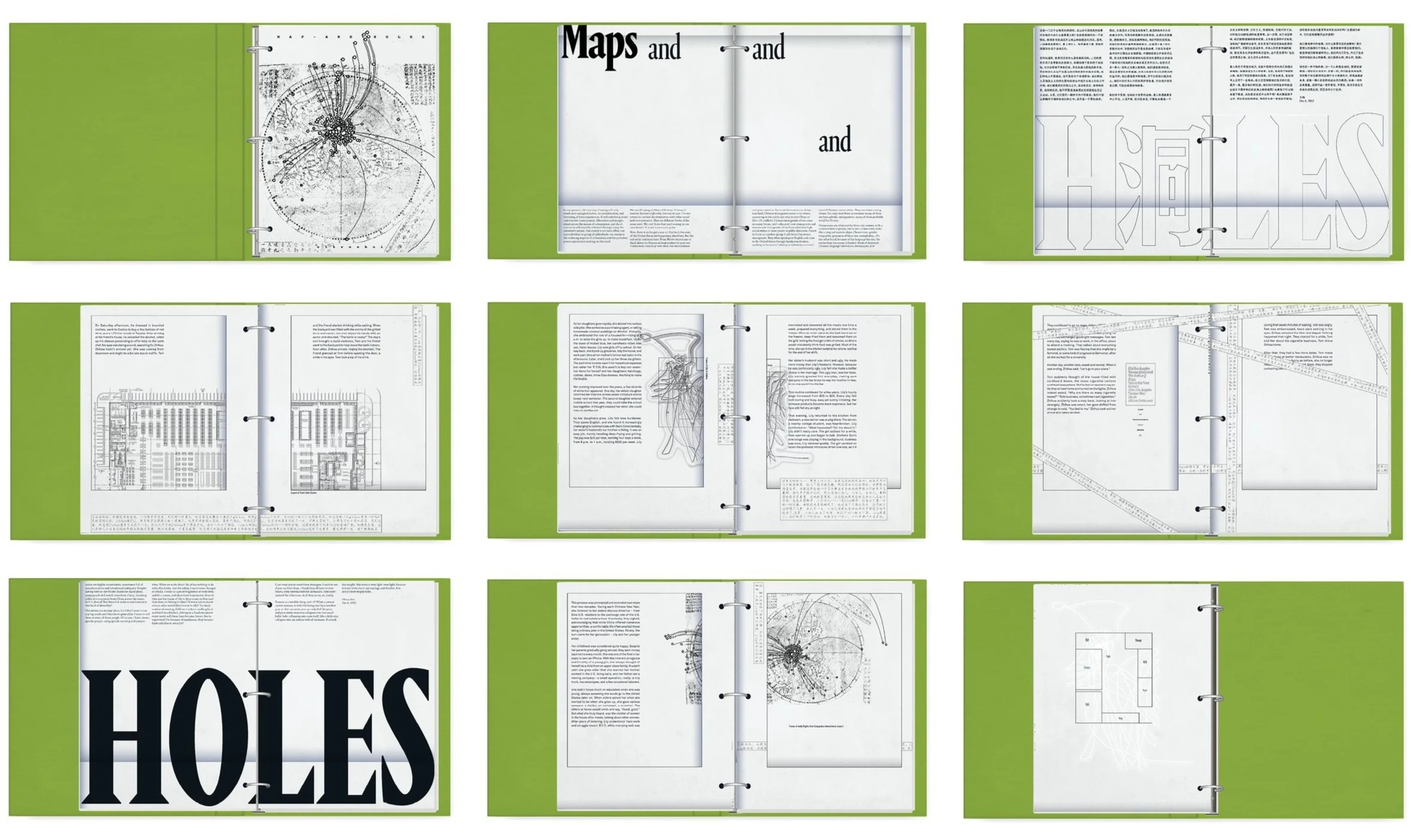Social Practice Design
I. Maps and Holes
I have conducted years-long interviews with three immigrants from Chinatown, aiming to shed light on their underrepresented stories. Through a combination of storytelling and mapping, I seek to document their everyday experiences, the nuances of their immigrant journeys, their social connections, and the obstacles they face navigating life in the United States. This project is not only a testament to their resilience but also an exploration of how personal narratives intersect with broader social, cultural, and geographic landscapes.
In this publication, I use maps as both a metaphor and a visual tool to represent their experiences. By integrating cartographic imagery with storytelling, the maps become more than geographic references—they serve as a means to navigate the emotional, social, and cultural landscapes of their lives. Each map reflects the complexity of their journeys, illustrating the intersections of identity, connection, and resilience in a way that words alone cannot capture.
In this project, I delve into the lives of three individuals whose stories paint a vivid portrait of the underrepresented immigrant experience.
Jason, a van driver, provides cross-state transportation for undocumented immigrants. Starting his journeys from Flushing, he drives over 20 hours at a stretch, taking his clients across the U.S. He shared memories of his childhood, tales of his grueling trips, the diverse clients he encounters, and the unique perspective that comes with life on the road. Lily, a mother of three daughters, works as a dishwasher in a midnight kitchen at a club in Chicago’s Chinatown. Her stories reveal the camaraderie and struggles of her co-workers, the dynamics of her family life, and the resilience required to navigate her world as a woman working late nights. Tom, an illegal cigarette seller I met in Monterey Park. Through his candid reflections, he offered insights into the complexities of his business, from his supply chain to his clientele, and even shared the lighter side of his life—his dating stories.
Through this work, I aim to move beyond the abstraction of immigrants as a generalized group and instead present them as concrete individuals with unique stories, struggles, and aspirations. By sharing their personal narratives, I hope to foster a deeper understanding of their lived experiences, encouraging readers to see the humanity, complexity, and resilience behind each person’s journey.
II. High School Design Education
I developed and taught a graphic design curriculum at a charter high school in Los Angeles.
Design education is a critical but often overlooked component of standard curricula. While traditional art programs focus on self-expression, design education emphasizes critical thinking, purpose-driven creativity, and communication—skills that are increasingly valuable in today’s world. By integrating design into education, we can equip students with tools to better navigate and shape the visual and social landscapes around them, preparing them not just for careers but for more thoughtful engagement with the world.
To me, the beauty of this practice lies in how abstract, philosophical concepts come alive in meaningful, tangible ways. Critiquing capitalism becomes redesigning their favorite restaurant or thrift shop; exploring a sense of belonging transforms into recreating the school logo and printing it on T-shirts. It’s deeply heartwarming to witness these ideas take on such sincerity and vibrancy. Through the carefully designed, color-printed handouts, I aim to show the students that I genuinely care about them—and I believe they feel it. Their growing investment in the projects is a testament to the power of thoughtful, personalized education.
